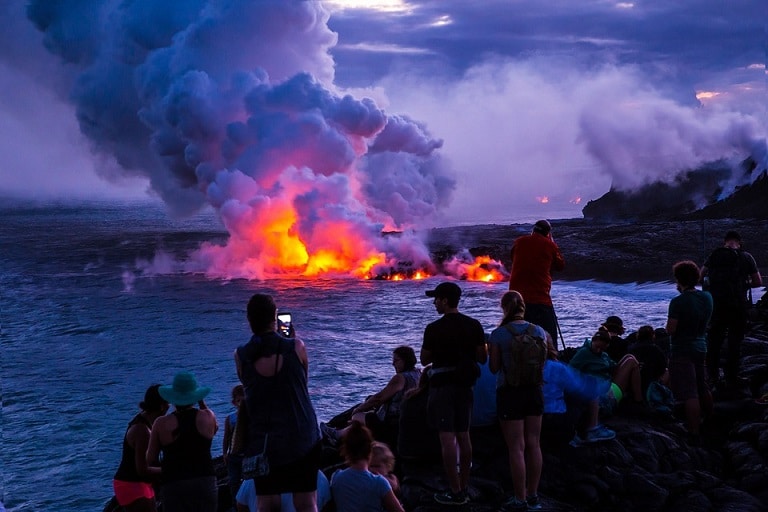Looking at the ocean’s stillness, the only thing you could highlight as even remotely disruptive is the waves. If you think a little below it, what you’ll find is sharks or some type of little creature on the coast of Australia that can kill you in an instant. However, going deeper into the ocean, there’s greater chaos to be discovered, and that is an entire collection of over 450 volcanoes that, with the help of moving tectonic plates, have formed in the Pacific Ocean over time.
In the depths below, you will see flashes of orange, red, and then suddenly, pitch black. That is lava oozing from the rolls and cracks of the ocean floor as Earthquakes rumble due to tectonic plates grazing over one another.
Most of the volcanoes can’t be seen, apart from the ones on the surface. Below all the rumbling, however, there are hundreds more to be found. By scientists, it has been declared the most geologically active location on Earth, hence its name, The Ring of Fire. The movement of the tectonic plates creates a continuous series of chains and trenches of volcanoes, which stretches twenty-five thousand miles.
The Ring of Fire is made up of 75% of all the Earth’s volcanic activity, and since it occurs under the water, we don’t get to see much of it. Although our eyes can’t see the disruption it causes in effect, we do experience them in the form of tsunamis around it. Since the Earth’s geology and ocean include interconnected systems that connect the entire world, we are all affected by it in some way or form. The undersea volcanoes also produce chemicals, which need to be understood as we also spill pollutants and chemicals into the ocean. Even though scientists have only begun studying it recently, they have the privilege of using high-end technology to do so today. Getting anywhere near the volcanic activity is very dangerous and requires expertise, robotic instruments, and an understanding of how to survive near these active volcanoes.






